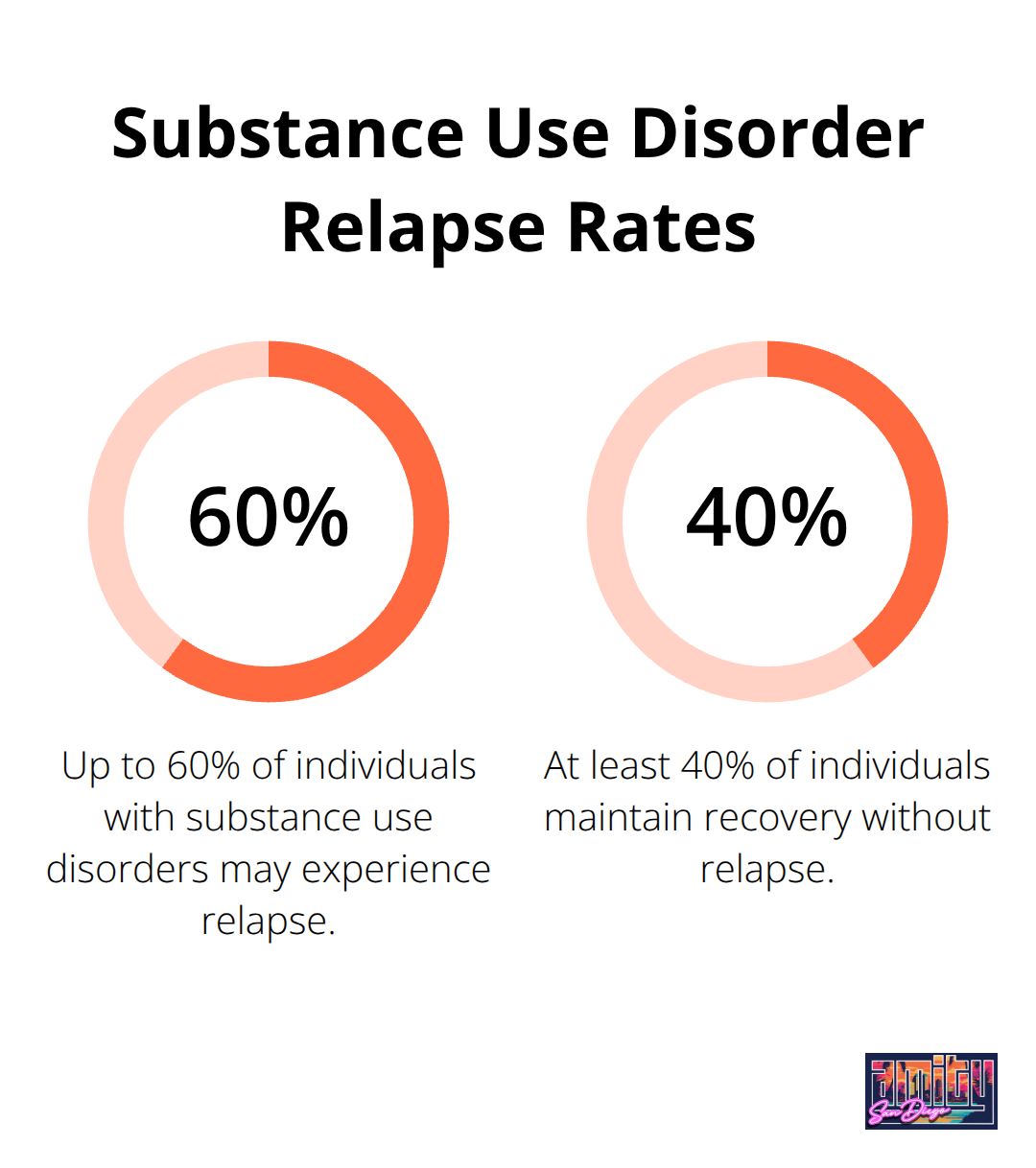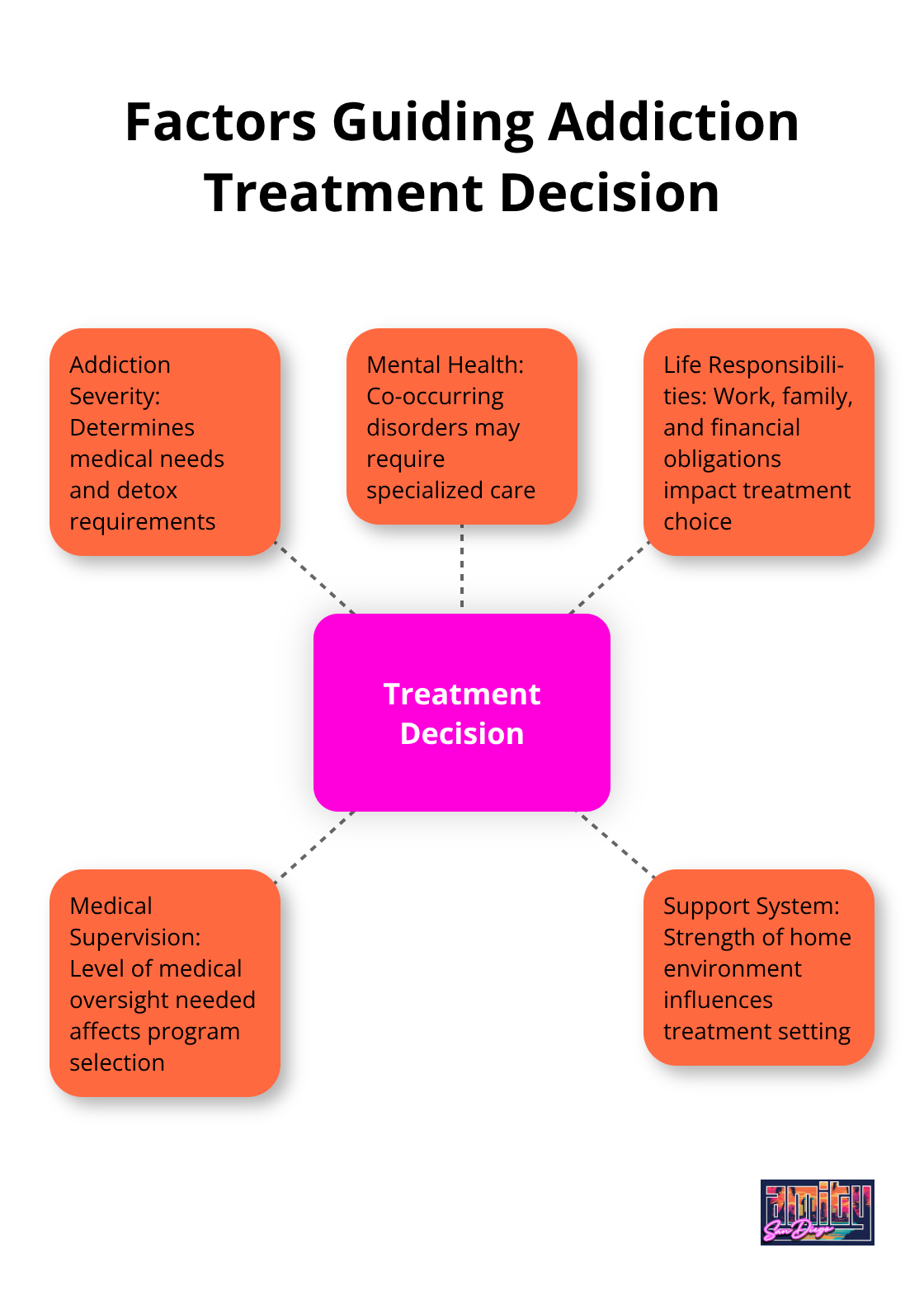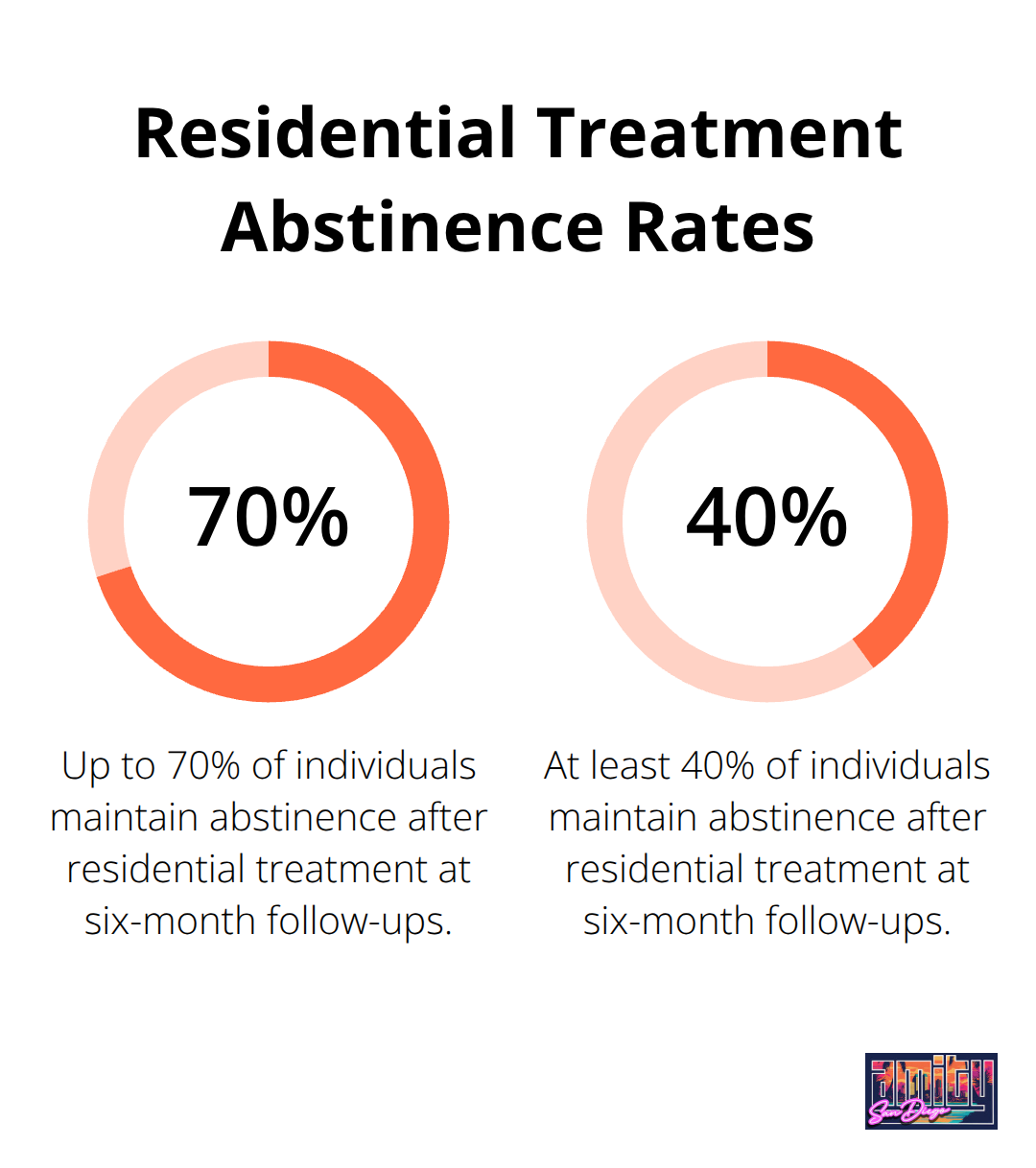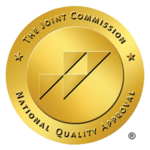Choosing the right addiction treatment can feel overwhelming when you’re already struggling. The decision between intensive outpatient and residential treatment programs affects your recovery timeline, daily routine, and long-term success.
We at Amity San Diego understand that every person’s situation is unique. The right treatment level depends on your specific needs, circumstances, and recovery goals.
What’s the Real Difference Between These Treatment Types
Intensive outpatient programs require 9 to 12 hours of weekly treatment across three sessions, typically scheduled during evenings or weekends. Residential treatment demands 30 to 90 days of full-time commitment with 24-hour supervision. The Substance Abuse and Mental Health Services Administration provides information about the number and characteristics of public and private substance use and mental health treatment facilities nationwide, making IOPs among the most common treatment options after basic outpatient care.
Time Commitment and Daily Structure
IOPs allow you to maintain work schedules and family responsibilities while you attend treatment sessions three times per week for three to four hours each. Most programs run from 6 PM to 9 PM or offer morning slots from 9 AM to 12 PM. Residential programs structure your entire day around treatment activities, meals, group sessions, and supervised recreation. Research shows that relapse rates for substance use disorders range from 40-60%, highlighting the importance of comprehensive treatment approaches regardless of setting.

Medical Supervision and Clinical Support
Residential facilities provide round-the-clock medical oversight with nurses and physicians available for emergencies, medication management, and withdrawal complications. IOPs typically offer weekly check-ins with medical staff and require patients to manage medications independently at home. According to the American Society of Addiction Medicine, individuals with severe withdrawal risks or multiple failed treatment attempts achieve better outcomes with residential care’s intensive medical oversight. IOPs work best for people with stable medical conditions who can safely detox at home (or have completed medical detox elsewhere).
Financial Impact and Insurance Coverage
The average cost of residential treatment ranges from $6,000 to $20,000 per month, while IOPs cost between $3,000 to $10,000 for a complete program. Most insurance plans cover both options, but residential care often requires prior authorization and may have stricter coverage limits. Research on mental health and substance abuse coverage continues to evolve as healthcare policies adapt to treatment needs. Out-of-pocket expenses for residential care can reach $60,000 for a 90-day program, making IOPs the more accessible choice for many families.
These structural differences create the foundation for your treatment decision, but your personal circumstances will determine which option serves your recovery goals best.
What Factors Should Guide Your Treatment Decision
Your addiction severity and withdrawal risks form the primary decision point for treatment selection. Medical detox requirements automatically point toward residential care, as alcohol withdrawal can cause life-threatening seizures within 6 to 24 hours, while benzodiazepine withdrawal may trigger dangerous complications for weeks.
Addiction Severity Determines Medical Needs
The American Society of Addiction Medicine provides criteria for organizing addiction treatment systems that help determine appropriate care levels. If you can safely detox at home or have completed medical detox elsewhere, IOPs become viable options. Your substance use patterns matter significantly – daily alcohol consumption that exceeds 8 drinks or opioid use that requires medication-assisted treatment typically require residential stabilization first.
Mental Health Complications Change Treatment Requirements
Dual diagnosis conditions (depression, anxiety, PTSD, or bipolar disorder alongside addiction) require specialized assessment. The National Institute on Drug Abuse found that people with substance use disorders often have co-occurring mental disorders. Severe depression with suicidal thoughts, active psychosis, or uncontrolled bipolar episodes demand residential care’s psychiatric oversight.
However, stable mental health conditions that are managed with consistent medication make IOPs effective. Your medication compliance history and therapy engagement predict IOP success – if you’ve consistently attended appointments and taken prescribed medications, outpatient care works well.
Life Responsibilities Create Practical Constraints
Work and family obligations create practical constraints that influence treatment choice. Parents of young children, primary household earners, or professionals in demanding careers often cannot commit to 30-90 day residential programs. IOPs accommodate these realities with evening and weekend options.
However, high-stress jobs or toxic home environments may sabotage recovery efforts in outpatient settings. If your home situation includes active substance users, domestic violence, or severe family dysfunction, residential treatment removes these triggers entirely. Financial considerations also matter – while residential care costs vary significantly, lost income for three months may exceed these treatment costs for high-income professionals.
These personal factors work together with your medical needs to create a clear picture of which treatment approach offers the best foundation for your recovery success.

Which Treatment Option Delivers Better Results
Intensive outpatient programs excel when you need treatment flexibility without sacrificing effectiveness. IOPs allow you to test recovery skills in real-world situations daily, which builds confidence through practical application. Intensive outpatient programs provide direct services for people with substance use disorders, offering structured treatment while maintaining work and family connections. This flexibility becomes your greatest asset when you have stable housing, supportive relationships, and motivation to practice new coping strategies immediately.
Real-World Testing Builds Lasting Skills
IOPs force you to navigate triggers, stress, and social situations while actively learning recovery techniques. This immediate practice strengthens your ability to handle challenges that residential patients only encounter after discharge. Your commute to work becomes practice for managing cravings, family dinners become opportunities to use communication skills, and weekend social events become chances to practice saying no to substances.
Residential Care Provides Necessary Reset
Residential treatment works best when your home environment actively undermines recovery efforts or when medical complications require constant supervision. This intensive approach removes all triggers while you build foundational recovery skills without external pressures. Residential programs typically achieve 40-70% abstinence rates at six-month follow-ups, with higher success rates for people who complete the full program duration and transition to structured aftercare.
Cost-Effectiveness Varies by Individual Needs
IOPs deliver exceptional value for people with stable living situations and strong support systems (costing $3,000-$10,000 for complete programs). Residential care requires higher upfront investment but may prevent costly relapses for high-risk individuals. Insurance coverage patterns show that most plans approve IOP treatment more readily than residential stays, which often require prior authorization and medical necessity documentation.

Final Thoughts
Professional assessment provides the most reliable path to choose between intensive outpatient and residential treatment programs. Licensed clinicians evaluate your medical history, substance use patterns, mental health status, and home environment to recommend appropriate care levels. This assessment process takes 60-90 minutes and covers withdrawal risks, previous treatment attempts, and current support systems.
We at Amity San Diego offer specialized outpatient programs with Partial Hospitalization and Intensive Outpatient options for individuals who need structured treatment while they maintain work and family responsibilities. Our licensed therapists provide personalized care plans that address both addiction and co-occurring mental health conditions. Your insurance coverage, family obligations, and medical needs all influence this decision.
The right treatment choice depends on your specific circumstances rather than general recommendations. Some people thrive in residential settings that remove all triggers, while others succeed better when they practice recovery skills in real-world situations. Recovery becomes possible when you match your treatment intensity to your actual needs rather than choose based on convenience or cost alone.



